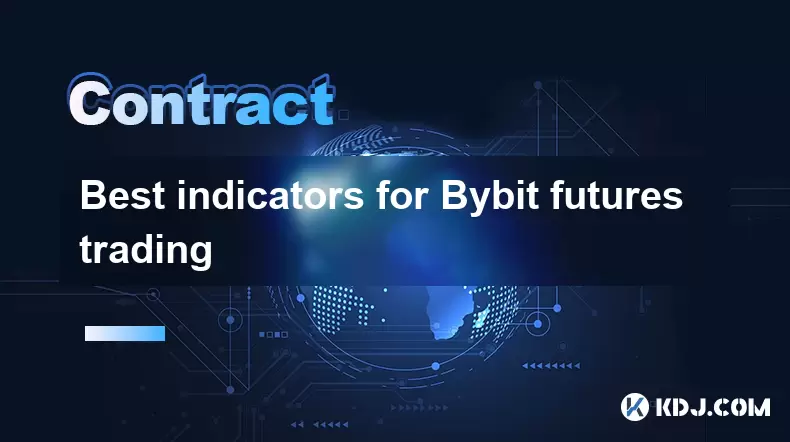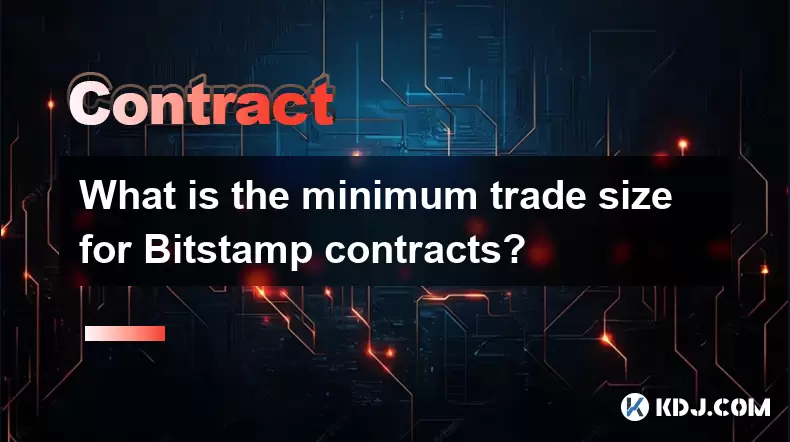-
 Bitcoin
Bitcoin $119100
0.00% -
 Ethereum
Ethereum $3649
-2.30% -
 XRP
XRP $3.213
-8.45% -
 Tether USDt
Tether USDt $1.000
-0.01% -
 BNB
BNB $783.2
-1.26% -
 Solana
Solana $191.1
-5.48% -
 USDC
USDC $0.9999
0.00% -
 Dogecoin
Dogecoin $0.2440
-8.65% -
 TRON
TRON $0.3103
-2.02% -
 Cardano
Cardano $0.8201
-7.68% -
 Hyperliquid
Hyperliquid $44.25
-3.09% -
 Stellar
Stellar $0.4326
-7.78% -
 Sui
Sui $3.777
-5.00% -
 Chainlink
Chainlink $18.34
-6.34% -
 Hedera
Hedera $0.2477
-8.72% -
 Bitcoin Cash
Bitcoin Cash $521.0
-0.79% -
 Avalanche
Avalanche $24.08
-6.29% -
 Litecoin
Litecoin $113.5
-6.79% -
 UNUS SED LEO
UNUS SED LEO $8.970
-0.16% -
 Shiba Inu
Shiba Inu $0.00001397
-8.55% -
 Toncoin
Toncoin $3.231
-2.27% -
 Ethena USDe
Ethena USDe $1.001
0.03% -
 Polkadot
Polkadot $4.174
-6.93% -
 Uniswap
Uniswap $10.37
-4.08% -
 Monero
Monero $317.6
-1.77% -
 Bitget Token
Bitget Token $4.720
-2.36% -
 Pepe
Pepe $0.00001290
-8.38% -
 Dai
Dai $1.000
0.02% -
 Aave
Aave $293.2
-4.95% -
 Bittensor
Bittensor $431.1
-3.60%
Best indicators for Bybit futures trading
Bybit futures traders rely on indicators like Moving Averages, RSI, and Bollinger Bands to spot trends, gauge momentum, and manage risk in volatile markets.
Jul 23, 2025 at 07:28 pm

Understanding Bybit Futures and Indicator Relevance
Trading Bybit futures effectively requires a deep understanding of technical analysis tools, particularly indicators that help identify market trends, momentum shifts, and potential entry or exit points. Unlike spot trading, futures involve leverage and contract expirations, making precision crucial. Traders rely on indicators to filter noise and interpret price action in volatile markets. The best indicators for Bybit futures trading are those that align with the platform’s real-time data feed, offer clear visual signals, and integrate well with risk management strategies. These tools assist in determining whether the market is overbought, oversold, trending, or ranging—critical insights when managing leveraged positions.
Moving Averages: Identifying Trend Direction
One of the most widely used tools in futures trading is the Moving Average (MA). This indicator smooths price data over a specified period, helping traders visualize the underlying trend. On Bybit, applying both Simple Moving Average (SMA) and Exponential Moving Average (EMA) provides complementary insights.
- Use the 20-period EMA to capture short-term momentum
- Apply the 50-period SMA to confirm medium-term direction
- Overlay the 200-period SMA to determine long-term market bias
When the shorter MA crosses above the longer MA, it generates a bullish signal, often referred to as a "golden cross." Conversely, a cross below indicates a bearish signal, known as a "death cross." Traders frequently combine these crossovers with volume analysis on Bybit’s charting interface to validate breakouts. Adjusting the timeframes—from 5-minute charts for scalping to 4-hour charts for swing trades—enhances adaptability across strategies.
Relative Strength Index (RSI): Gauging Momentum and Overbought/Oversold Levels
The Relative Strength Index (RSI) is pivotal for identifying potential reversals in Bybit futures markets. Ranging from 0 to 100, RSI values above 70 suggest an asset may be overbought, while readings below 30 indicate oversold conditions.
To use RSI effectively:
- Set the default period to 14 unless fine-tuning for volatility
- Watch for divergences between price and RSI—when price makes a new high but RSI does not, it may signal weakening momentum
- Combine RSI with support/resistance levels on Bybit’s chart for higher-probability trade setups
For instance, if BTCUSDT perpetual futures reach an RSI of 75 near a strong resistance zone, this confluence increases the likelihood of a pullback. Conversely, an RSI of 28 near historical support may present a buying opportunity. Avoid acting solely on RSI extremes in strong trending markets; instead, wait for confirmation via candlestick patterns or moving average alignment.
Bollinger Bands: Measuring Volatility and Price Extremes
Bollinger Bands consist of a middle SMA (typically 20-period) and two standard deviation bands above and below. These bands expand during high volatility and contract during consolidation, offering dynamic support and resistance levels.
Key applications on Bybit include:
- Price touching the upper band may indicate overbought conditions, especially if accompanied by bearish candlesticks
- Price nearing the lower band can signal oversold scenarios, particularly in ranging markets
- Squeeze patterns, where bands narrow significantly, often precede explosive moves—ideal for anticipating breakout entries
Traders monitor the squeeze by observing the distance between the upper and lower bands. When the bands begin to widen after a prolonged contraction, it suggests increasing market participation. Confirm the breakout direction using volume spikes visible in Bybit’s depth chart or through a follow-up candle closing beyond the band.
Volume Profile and On-Balance Volume (OBV)
While many focus on price-based indicators, volume analysis is essential for validating moves in Bybit futures. The Volume Profile tool displays traded volume at specific price levels, highlighting areas of high liquidity—key zones where price may reverse or accelerate.
On Bybit, access to tick volume allows approximation of true volume behavior. Combine this with On-Balance Volume (OBV), which accumulates volume based on price direction:
- Rising OBV confirms bullish momentum
- Declining OBV suggests distribution or selling pressure
- Divergences between price and OBV can warn of impending reversals
For example, if BTCUSDT reaches a new high but OBV fails to surpass its prior peak, this bearish divergence implies weak buying interest. Use such signals alongside order book data on Bybit to assess whether large liquidations or funding rate shifts support the thesis.
Ichimoku Cloud: Comprehensive Trend and Support/Resistance Analysis
The Ichimoku Kinko Hyo (Ichimoku Cloud) offers a holistic view of trend, momentum, and support/resistance—all in one indicator suite. Though complex at first glance, its components provide layered confirmation ideal for Bybit futures trading.
Core elements include:
- Tenkan-sen (Conversion Line): Short-term trend indicator
- Kijun-sen (Base Line): Medium-term equilibrium level
- Senkou Span A & B: Form the "cloud" (Kumo), projecting future support/resistance
- Chikou Span (Lagging Line): Confirms strength by plotting current price delayed by 26 periods
When price trades above the cloud, the trend is generally bullish. A thick green cloud acts as strong support. Conversely, price below a red cloud signals bearish control. Entry signals arise when Tenkan-sen crosses above Kijun-sen within or above the cloud. Chikou Span should ideally not intersect past price action to confirm validity.
Frequently Asked Questions
Can I use multiple indicators together on Bybit’s web platform?
Yes, Bybit’s built-in TradingView charting engine allows overlaying multiple indicators simultaneously. Navigate to the “Indicators” button, search for desired tools (e.g., RSI, Bollinger Bands), and apply them. Customize colors and parameters to avoid clutter. Ensure indicators serve different purposes—such as one for trend (EMA), one for momentum (RSI), and one for volume (OBV)—to prevent redundant signals.
How do I adjust indicator settings for different timeframes on Bybit?
Open any indicator from the chart toolbar, click the gear icon next to its name, and modify input values. For example, change RSI from 14 to 9 for faster responses on 5-minute charts. Save presets via “Save As” to quickly switch between configurations tailored for scalping, day trading, or swing strategies.
Do indicators work the same on Bybit perpetual versus quarterly contracts?
Yes, technical indicators function identically across perpetual and quarterly futures because they analyze price data, not contract structure. However, differences in liquidity and funding rates may cause slight price divergences. Always verify indicator signals against the specific contract’s order book and open interest on Bybit.
Is it possible to backtest indicator strategies directly on Bybit?
Bybit does not offer native backtesting. To test indicator-based strategies, export historical price data via API or use third-party platforms like TradingView’s strategy tester or Python libraries (e.g., Backtrader). Replicate Bybit’s leverage and fee structure in simulations for accurate performance assessment.
Disclaimer:info@kdj.com
The information provided is not trading advice. kdj.com does not assume any responsibility for any investments made based on the information provided in this article. Cryptocurrencies are highly volatile and it is highly recommended that you invest with caution after thorough research!
If you believe that the content used on this website infringes your copyright, please contact us immediately (info@kdj.com) and we will delete it promptly.
- South Korea's Credit Card Industry Embraces Stablecoin Regulations: A New Era?
- 2025-07-24 10:30:12
- Trump, AI, and Deregulation: A Wild West Tech Landscape?
- 2025-07-24 10:30:12
- Bitcoin Cash (BCH) Price Forecast & Trends: What's the Buzz?
- 2025-07-24 08:50:12
- Public Companies and Ethereum: A $3.2 Billion Bet on the Future?
- 2025-07-24 09:10:12
- XRP, Safe Havens, and BTC Miners: Navigating Crypto's Latest Moves
- 2025-07-24 08:30:12
- XRP, SEC, and ETFs: A Crypto Rollercoaster
- 2025-07-24 09:10:12
Related knowledge

Why is my Bitstamp futures position being liquidated?
Jul 23,2025 at 11:08am
Understanding Futures Liquidation on BitstampFutures trading on Bitstamp involves borrowing funds to open leveraged positions, which amplifies both po...

Does Bitstamp offer inverse contracts?
Jul 23,2025 at 01:28pm
Understanding Inverse Contracts in Cryptocurrency TradingIn the realm of cryptocurrency derivatives, inverse contracts are a specific type of futures ...

How to find your Bitstamp futures trade history?
Jul 23,2025 at 08:07am
Understanding Bitstamp and Futures Trading AvailabilityAs of the current state of Bitstamp’s service offerings, it is critical to clarify that Bitstam...

Can I use a trailing stop on Bitstamp futures?
Jul 23,2025 at 01:42pm
Understanding Trailing Stops in Cryptocurrency TradingA trailing stop is a dynamic type of stop-loss order that adjusts automatically as the price of ...

What is the minimum trade size for Bitstamp contracts?
Jul 23,2025 at 07:14pm
Understanding Bitstamp and Its Contract OfferingsBitstamp is one of the longest-standing cryptocurrency exchanges, established in 2011, and known for ...

How to trade ETH perpetuals on Bitstamp?
Jul 23,2025 at 03:28am
Understanding ETH Perpetual ContractsETH perpetual contracts are derivative products that allow traders to speculate on the price of Ethereum without ...

Why is my Bitstamp futures position being liquidated?
Jul 23,2025 at 11:08am
Understanding Futures Liquidation on BitstampFutures trading on Bitstamp involves borrowing funds to open leveraged positions, which amplifies both po...

Does Bitstamp offer inverse contracts?
Jul 23,2025 at 01:28pm
Understanding Inverse Contracts in Cryptocurrency TradingIn the realm of cryptocurrency derivatives, inverse contracts are a specific type of futures ...

How to find your Bitstamp futures trade history?
Jul 23,2025 at 08:07am
Understanding Bitstamp and Futures Trading AvailabilityAs of the current state of Bitstamp’s service offerings, it is critical to clarify that Bitstam...

Can I use a trailing stop on Bitstamp futures?
Jul 23,2025 at 01:42pm
Understanding Trailing Stops in Cryptocurrency TradingA trailing stop is a dynamic type of stop-loss order that adjusts automatically as the price of ...

What is the minimum trade size for Bitstamp contracts?
Jul 23,2025 at 07:14pm
Understanding Bitstamp and Its Contract OfferingsBitstamp is one of the longest-standing cryptocurrency exchanges, established in 2011, and known for ...

How to trade ETH perpetuals on Bitstamp?
Jul 23,2025 at 03:28am
Understanding ETH Perpetual ContractsETH perpetual contracts are derivative products that allow traders to speculate on the price of Ethereum without ...
See all articles

























































































